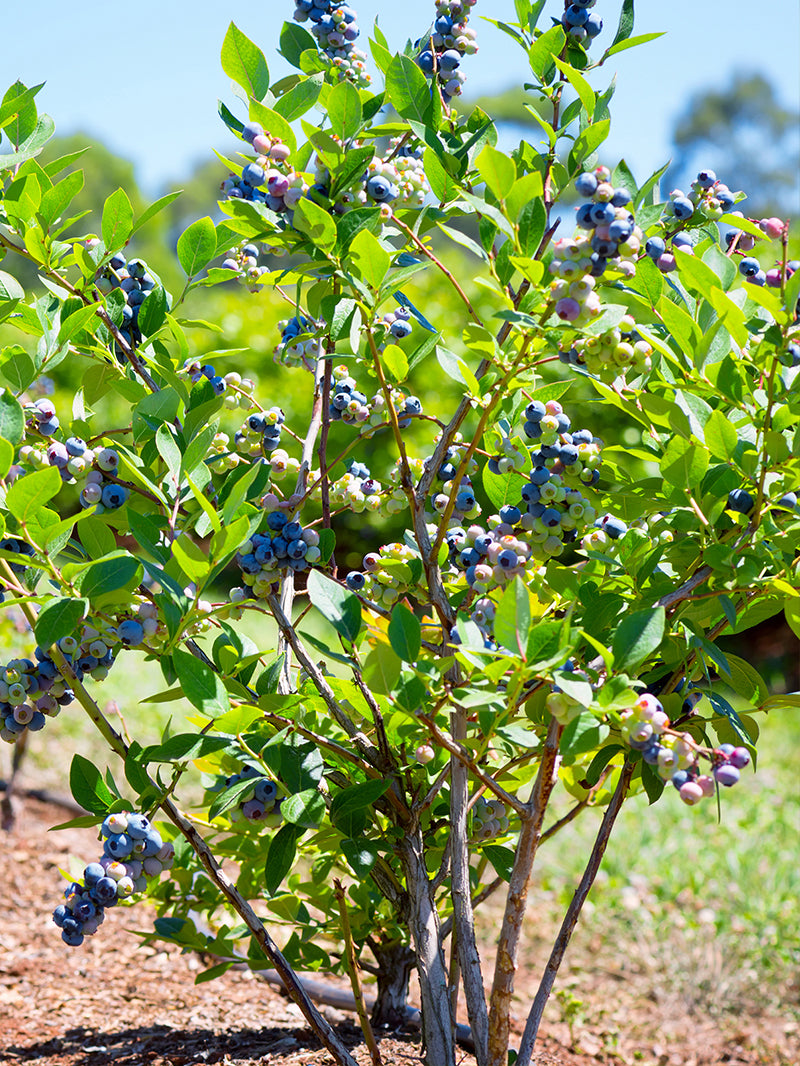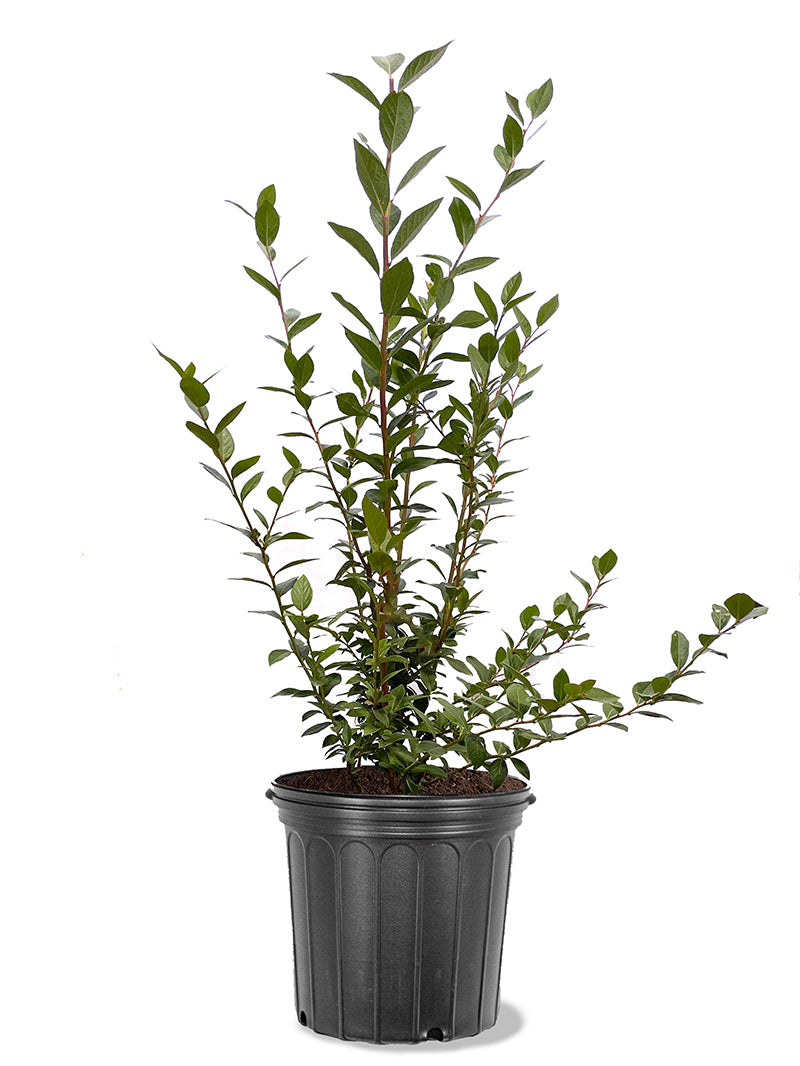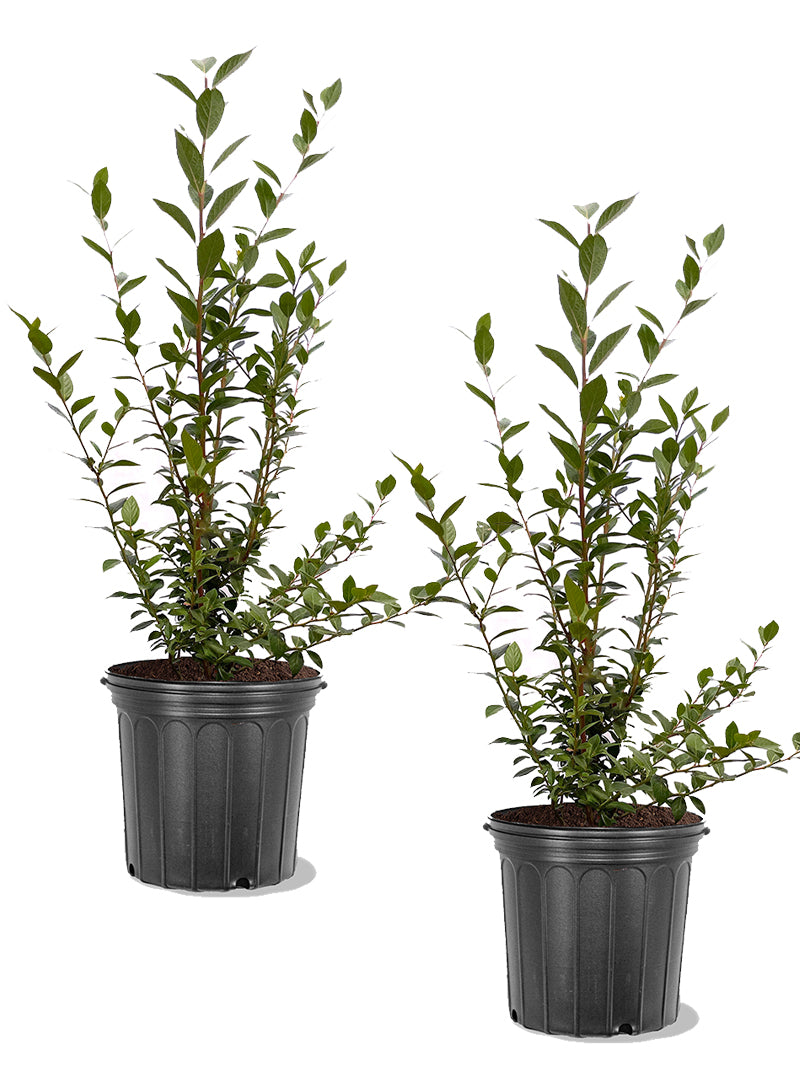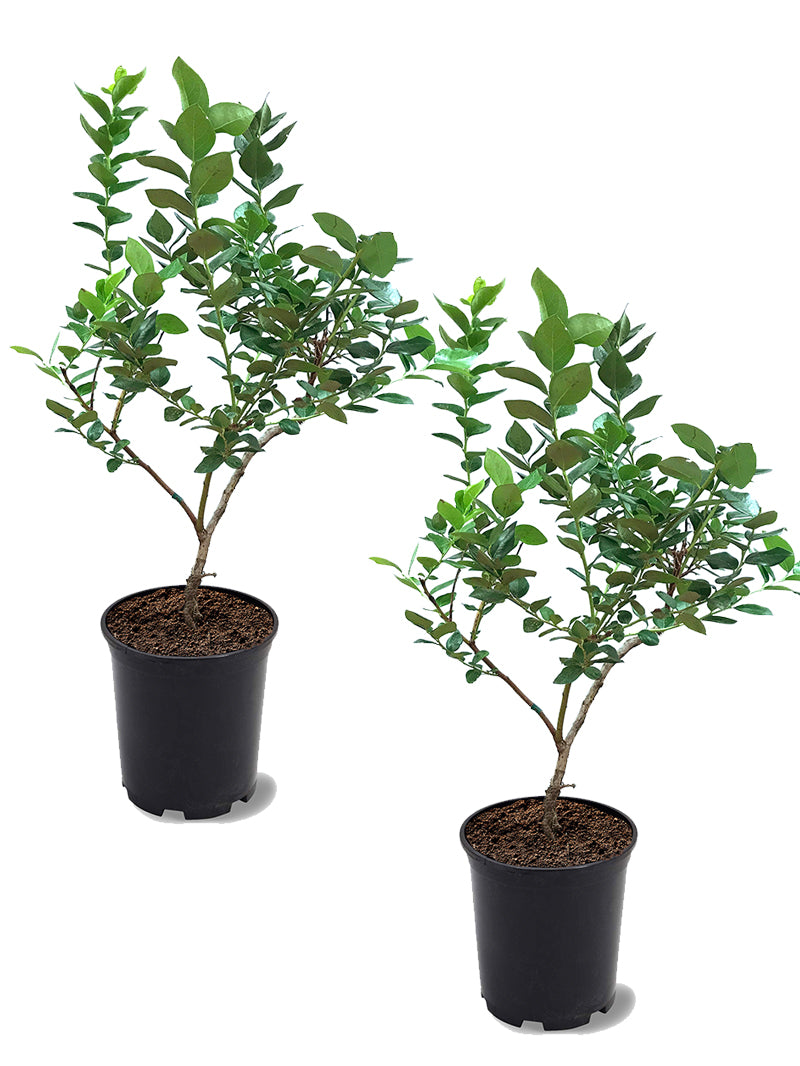Plant Quick Guide
Growing Zones:
Mature Height:
Mature Width:
Sunlight:
Spacing:
Chill Hours:
Growth Rate:
Harvest Time:
Years to Bear:
Pollinator:
Does Not Ship To:
Blueberry - DeSoto (Rabbit Eye)
USDA Hardiness Zones: 9-Jun
Description
The DeSoto Blueberry is a resilient and productive variety, known for its ability to thrive in a range of conditions and produce abundant, flavorful berries. With its compact growth and reliable performance, the DeSoto is an excellent choice for home gardeners looking to enjoy high-quality blueberries with minimal maintenance.
Key Features
- High Yields: DeSoto is known for its generous fruit production, offering large clusters of berries that ripen evenly for easy harvesting.
- Resilient and Hardy: This variety is well-suited to a variety of soil types and climates, making it an excellent choice for gardeners in a range of USDA zones.
- Sweet, Flavorful Berries: The medium to large berries of DeSoto are sweet, juicy, and perfect for fresh eating, preserves, or baking.
- Attractive Foliage: In addition to its berries, DeSoto offers beautiful green foliage that turns vibrant red and orange in the fall, adding ornamental value to your garden.
- Compact Growth: DeSoto’s compact size makes it an ideal choice for smaller gardens, raised beds, or container planting.
Mature Size
- Height: 4–5 feet
- Spread: 3–4 feet
Care Instructions
- Soil Requirements: DeSoto thrives in well-drained, acidic soil with a pH of 4.5–5.5. Enhance soil structure with organic amendments like peat moss or pine bark.
- Sunlight: Full sun (at least 6 hours per day) is essential for optimal fruit production and plant health.
- Watering: Keep soil consistently moist but not waterlogged. Blueberries have shallow roots and benefit from regular watering, especially during dry spells.
- Fertilization: Use a fertilizer formulated for acid-loving plants, applying it in early spring and again after harvest to promote healthy growth and fruiting.
- Pollination: While DeSoto is self-pollinating, planting it near other blueberry varieties can improve yields and enhance fruit quality.
- Pruning: Prune in late winter or early spring to remove dead or weak growth and maintain the plant’s shape. Regular pruning encourages better airflow and productivity.
- Winter Protection: Mulch around the base of the plant to help insulate the roots during colder months and protect them from extreme temperatures.
Why Choose DeSoto Blueberry?
The DeSoto Blueberry is a perfect choice for gardeners seeking a reliable, easy-to-grow variety that delivers consistent, high-quality fruit. Its resilience to different growing conditions, compact growth, and flavorful berries make it a great option for home gardens, containers, and raised beds. Whether you’re enjoying fresh berries or preserving them for later, DeSoto will provide plenty of delicious fruit for years to come.
More Information: Blueberry Growing Guide
Shipping

At Plant Me Green we handle, package and ship the products you order with the utmost care. We ship your plants using FedEx Ground® the following business day after you have completed checkout.
We are now offering $15 flat rate shipping for all tree orders! Replacement tree shipping cost will be $15 per box. We still cannot ship to some states and US territories based off the Agricultural Laws that may be in place. Please see below for all exclusions.
If you have any questions concerning transit time for your order, please feel free to contact us at info@plantmegreen.com or toll free 855-817-5268.
Trees: Due to strict Agricultural Laws in place, we currently cannot ship to the following states: Alaska, Arizona, California, Hawaii. We cannot ship to Puerto Rico or international.
How to Plant

STEP 2) Once you've located the perfect spot, the hole you are digging must be at least double the width and as deep as the root system you are planting.
STEP 3) Remove the plant from the pot and place the root ball in the hole. The top of the root system should be level with the ground. Before placing the tree or shrub in the hole, use your hands to gently break up the root system.
STEP 4) Once the plant is in place, backfill the hole with native soil and any leftover potting material.
STEP 5) Pack down the soil to eliminate any air pockets.
STEP 6) When finished, water thoroughly.
Care Guide














